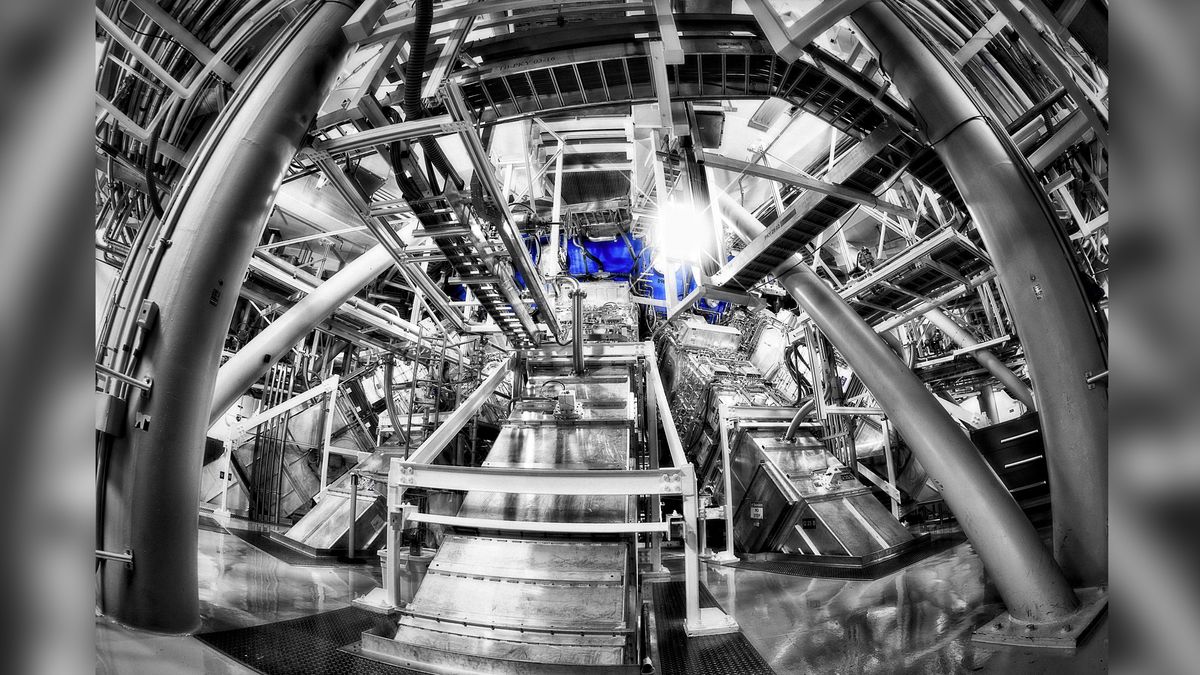Key Takeaways:
- Scientists achieved a record-breaking burst of energy exceeding 10 quadrillion watts using a powerful laser to hit a hydrogen pellet.
- This is a significant step towards achieving nuclear fusion, which could be a clean and sustainable energy source.
- Nuclear fusion is the process of smashing lighter nuclei together to make heavier elements, unlike nuclear fission which splits heavy nuclei.
- ITER, a massive project in France, is another attempt to achieve fusion using a tokamak, a doughnut-shaped chamber.
- The NIF technique uses a powerful laser to achieve fusion and may not be suitable for a power plant, but paves the way for future research.

In order to produce a record-breaking burst of energy exceeding 10 quadrillion watts, scientists employed an unconventional method of creating nuclear fusion. They did this by directing intense light beams from the largest lasers in the world towards a small pellet of hydrogen.
Researchers at the Lawrence Livermore National Laboratory in Northern California said they had focused 192 giant lasers at the National Ignition Facility (NIF) onto a pea-size pellet, resulting in the release of 1.3 megajoules of energy in 100 trillionths of a second — roughly 10% of the energy of the sunlight that hits Earth every moment, and about 70% of the energy that the pellet had absorbed from the lasers. The scientists hope one day to reach the break-even or “ignition” point of the pellet, where it gives off 100% or more energy than it absorbs.
The energy yield exceeds the previous record of 170 kilojoules that the scientists had set and is much larger than what they had anticipated.
The primary goal of the NIF is to study nuclear fusion weapons, and the researchers hope that this will expand their ability. Additionally, it may pave the way for novel approaches to utilizing the energy produced by nuclear fusion, which powers the sun and other stars. There are scientists who believe that nuclear fusion could eventually be a sustainable and safe way to produce energy on Earth.
Director of Lawrence Livermore National Laboratory Kim Budil said in a statement that “this result is a historic step forward for inertial confinement fusion research, opening a fundamentally new regime for exploration and the advancement of our critical national security missions.”
Giant lasers
Nuclear fission, which produces energy by splitting the heavy nuclei of elements like uranium and plutonium into lighter nuclei, is used in modern nuclear power plants. But stars can generate even more energy from nuclear fusion, a process of smashing together lighter nuclei to make heavier elements.
Stars can fuse many different elements, including carbon and oxygen, but their main energy source comes from the fusion of hydrogen into helium. Due to their enormous size and powerful gravitational pull, stars receive extreme pressure during the fusion process.
Instead, a doughnut-shaped chamber known as a tokamak is used in the majority of Earthbound attempts to produce energy from fusion, such as the massive ITER project being constructed in France, to confine a thin plasma of hot, neutron-heavy hydrogen inside strong magnetic fields.
Scientists and engineers have worked for more than 60 years to achieve sustainable nuclear fusion within tokamaks, with only limited success. However, as Live Science reported, some researchers believe they will be able to maintain fusion in tokamaks in a matter of years. This is not expected to happen with ITER until after 2035.
There are very few ways to achieve nuclear fusion without a tokamak, and one of them is the technique developed at Lawrence Livermore National Laboratory.
Instead, the NFI uses an array of laser-light amplifiers the size of three football fields to focus laser beams on hydrogen fuel pellets in a 33-foot-wide (10 meters) spherical metal “target chamber.” These lasers can produce up to 4 megajoules of energy, making them the most powerful in the world.
The technique was initially created to study the behavior of hydrogen in thermonuclear weapons, or “hydrogen bombs,” but researchers believe it may also be useful for creating energy through nuclear fusion.

Fusion power
There are efforts to change the process so that it can be used commercially, even though the NIF setup couldn’t be used in a fusion power plant because its lasers can only fire roughly once a day, whereas a power plant would need to vaporize several fuel pellets every second.
Although he was not involved in the new research, Siegfried Glenzer, a plasma physicist at Stanford University’s SLAC National Accelerator Laboratory, previously worked at the Livermore facility. He told The New York Times that SLAC scientists are developing a lower-powered laser system that could fire much more rapidly.
Glenzer anticipates that nuclear fusion energy will play a bigger role in the drive to replace fossil fuels, which have recently been overtaken by solar energy and other technologies. “This is very promising for us, to achieve an energy source on the planet that won’t emit CO2,” he said in the Times article, referring to the greenhouse gas carbon dioxide.
Physicist Stephen Bodner, who formerly headed laser plasma research at the Naval Research Laboratory in Washington, D.C., but is now retired, is critical of some details of the NIF’s design. However, he acknowledges that the outcomes, which were almost at the pellet’s “ignition”—the point at which it releases an equal amount of energy as it takes in—astonished him. “They have come close enough to their goal of ignition and break-even to call it a success,” Bodner told the New York Times.
Bodner said, “It demonstrates to the skeptic that there is nothing fundamentally wrong with the laser fusion concept,” even though he prefers a different design. “It is time for the U.S. to move ahead with a major laser fusion energy program.”


